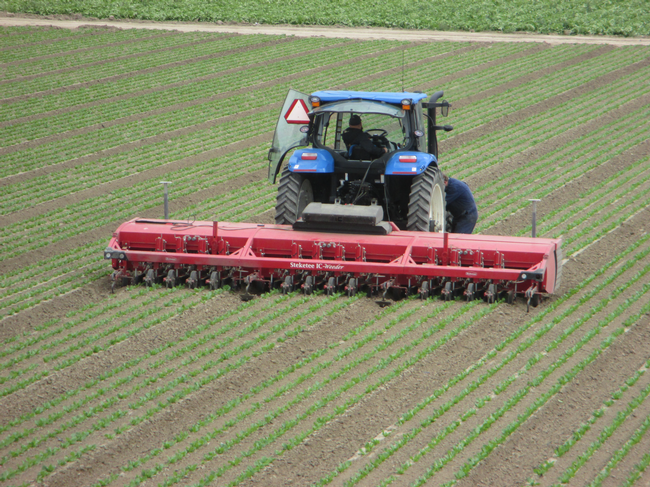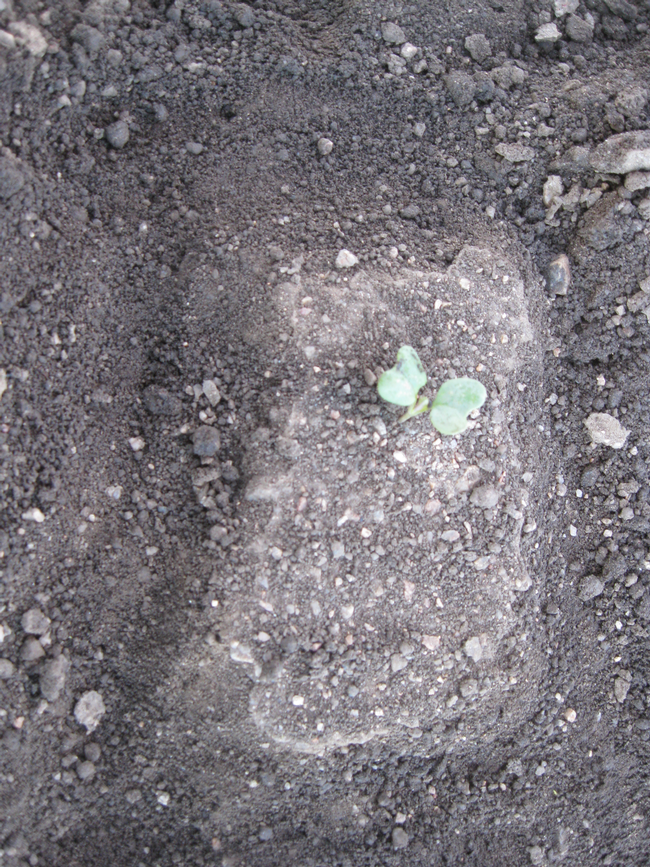Steketee IC cultivating three 80-inch wide beds
Uncultivated buffer area around a keeper plant
There is a great deal of interest in developing automated weeders for use in vegetable crops. Innovations that are being developed include: 1) the use of deep learning to train computers to better distinguish crop plants from weeds; 2) use of spray kill mechanism that can allow for pin point application of herbicides (e.g. Seek & Spray, Blue River Technologies); and 3) autonomous weeders (e.g. Naio, France; AgBot, Australia; Anatis, France; FarmWise, San Francisco, CA). A quick search on YouTube will reveal a large number of autoweeding concepts that are being developed in many parts of the world. One interesting concept is a solar powered autonomous weeder, EcoRobotix (Switzerland), that removes weeds from the seedline by applying a micro-dose of herbicide.
At present, the automated weeders are quite expensive and are only affordable by larger operations. However, one company is offering monthly rentals of their machine, which allows growers to try out the technology before making a large investment, as well as making the technology accessible to smaller growers. Considering we are still in the early stages of the development of this technology, it will be fascinating to watch its adoption and progress as time moves forward.

